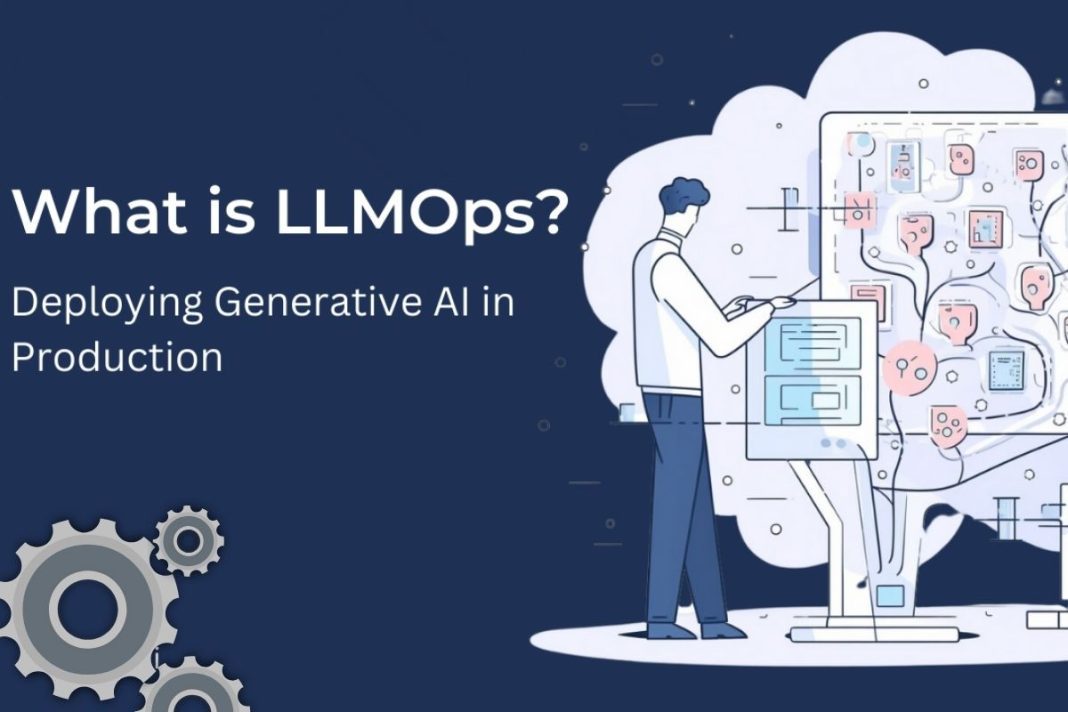Natural language processing has recently undergone a revolution thanks to Large Language Models, often known as LLMOps. These deep learning-based models have demonstrated astounding proficiency in a variety of tasks, including text production, translation, sentiment analysis, and more. Anyone with an interest in artificial intelligence, machine learning, or natural language processing must comprehend the principles underlying these models. We will examine the architecture, training, and practical applications of large language model operations in this blog.
What are Large Language Models?
Artificial neural networks called large language models are created to process and produce writing that resembles that of humans. They are a part of the Transformers model category, which Vaswani et al. first discussed in their paper “Attention Is All You Need.” These models perform exceptionally well across a range of natural language interpretation and generating tasks, and they have enormous popularity due to their outstanding capacity for handling data sequences.
The GPT (Generative Pre-trained Transformer) models created by OpenAI and the BERT (Bidirectional Encoder Representations from Transformers) models created by Google are two of the most well-known LLMOps. These models have produced cutting-edge outcomes in a variety of applications, including text summarization, chatbots, and language translation.
LLMOps Architecture
Large Language Models’ design is built on a deep neural network with a stack of transformer layers. These models’ main elements are as follows:
- Two sublayers make up each transformer layer: The Embedding Layer transforms words or subwords into continuous vectors so that the model can comprehend the meaning of each word in relation to the rest of the sentence.
Large language models’ fundamental building pieces are known as transformer layers. - Multi-Head Self-Attention: This mechanism allows the model to evaluate the significance of various words in a phrase according to their context. It aids the model in capturing word dependencies. b. Feedforward neural networks: These networks process the self-attention layer’s output and create new representations for each word or token.
- Layer normalization and residual connections: These are essential for keeping deep network training stable. They make it possible to train models with hundreds of layers and aid in preventing the vanishing gradient problem.
Real-World Applications of LLMOps
Large Language Models have found use in a variety of fields and sectors, including:
- Natural Language Understanding: They are employed in tasks like as text classification, sentiment analysis, and named entity recognition.
- Text Generation: LLMOps are used to generate text, including articles, creative writing, and even code.
- Translation: They are excellent at machine translation jobs, making it possible to accurately translate text from one language to another.
- Chatbots: Intelligent chatbots and virtual assistants are powered by chatbots, enabling more casual and situational dialogues.
- Information Retrieval: Search engines can employ LLMOps to better comprehend user queries and deliver more pertinent search results.
- Text Summarization: They can summarize lengthy texts, making it simpler for users to retrieve the most important information.
How is LLMOps different from MLOps?
However, their focus and aim are essentially different:
Large Language Model Operations, or LLMOps
- Focus: The operational features of large language models (LLMs), such as GPT-3, BERT, or comparable models, are the main focus of LLMOps. These models were created for jobs requiring the understanding and creation of natural language.
- LLMOps’ primary goal: is to efficiently manage and deploy big language models. It involves activities like model optimization, effective inference, and addressing linguistic subtleties. These models are effectively utilized in applications like chatbots, translation services, content generation, and others thanks to LLMOps.
- Challenges: Understanding the nuances of language models, improving their efficiency, and fine-tuning them for particular applications are frequently challenges in LLMOps. A big difficulty for LLMOps is ensuring that their text is clear and correct in its context.
MLOps (Machine Learning Operations):
- Focus MLOps (Machine Learning Operations) is a broad term that includes all facets of operationalizing machine learning models, such as conventional models, computer vision models, recommendation systems, and, to a certain extent, language models.
- Streamlining the machine learning model lifecycle from development and training to deployment and monitoring is the main goal of MLOps. Version control, continuous integration and continuous deployment (CI/CD), and model monitoring best practices are all involved.
- Managing the data pipeline, assuring model training reproducibility, managing model deployments, and sustaining model performance in real-world situations are key MLOps difficulties.
Why do we need LLMOps?
Large Language Model Operations (LLMOps) are essential for several reasons, given the growing prominence of large language models (LLMs) like GPT-3, BERT, and their applications. Here are some key reasons why LLMOps are crucial:
- Optimizing Model Performance:
- LLMs are complex and resource-intensive models, often with hundreds of millions or even billions of parameters. LLMOps involve fine-tuning and optimizing these models for specific tasks or domains, ensuring they perform effectively in real-world applications. This is essential for making LLMs practical and cost-effective.
- Efficient Inference:
- Deploying LLMs in production systems requires optimizing their inference for low latency and high throughput. LLMOps play a significant role in ensuring that models can process user queries or generate responses quickly and efficiently, making them suitable for real-time applications like chatbots or language translation services.
- Data Management:
- LLMOps are responsible for managing the data used to train and fine-tune LLMs. This includes data collection, preprocessing, and ensuring that the model is train on a diverse and representative dataset. Proper data management is critical to the model’s performance and generalization ability.
- Model Governance:
- LLMs can generate text that reflects biases present in their training data. LLMOps must address ethical and governance concerns by developing guidelines and systems to mitigate biases and ensure responsible AI usage. This includes defining acceptable use cases and handling sensitive information appropriately.
- Scalability:
- As the demand for LLM-powered applications increases, LLMOps help scale the deployment of these models by managing multiple instances, load balancing, and resource allocation to ensure consistent performance and availability.
What are the benefits of LLMOps?
Here are some of the key advantages of LLMOps:
- Improved Model Performance:
LLMOps enable fine-tuning and optimization of LLMs for specific tasks or domains, leading to better model performance. This customization ensures that the LLM generates more accurate, context-aware, and relevant responses, making it suitable for a wide range of applications. - Efficiency in Inference:
Efficient model deployment is crucial for real-time applications such as chatbots, virtual assistants, or language translation services. LLMOps focus on optimizing inference, reducing latency, and improving throughput, ensuring that LLMs can handle user queries and generate responses quickly and at scale. - Scalability:
LLMOps help organizations scale the deployment of LLMs by managing multiple instances and resource allocation. This scalability is essential to meet the growing demand for LLM-powered applications while maintaining consistent performance. - Cost Optimization:
Large LLMs can be resource-intensive to train and deploy. LLMOps address cost management by optimizing resource allocation, reducing electricity and hardware costs, and making the usage of LLMs more cost-effective. - Customization:
LLMOps allow organizations to customize pre-trained LLMs for specific business needs. This customization might involve fine-tuning for niche domains, industries, or user bases, ensuring that the model provides responses tailored to the organization’s unique requirements.
What is an LLMOps platform?
Large language model operations (LLMOps) is a term that refers to a variety of techniques and methods for successfully managing LLMs. Even though there isn’t a specific platform called “LLMOps,” there are broader platforms and technologies use in the area of machine learning operations (MLOps) that can be used to manage LLMs. These platforms and tools relate to LLMOps in the following ways:
- MLOps Platforms: MLOps platforms are created to automate and streamline the whole lifespan of a machine learning model. Version control, model training, deployment, monitoring, and management of ML models are just a few of the features that these platforms provide. They can be used to manage the deployment and operations of LLMs, albeit they are not just limited to LLMs.
- AI Model Management Platforms: Some companies offer AI model management platforms that can be adapted for LLM operations. These platforms provide tools for deploying, scaling, monitoring, and maintaining AI models, including LLMs.
- Cloud Services: Major cloud providers, such as AWS, Azure, and Google Cloud, offer services for machine learning and AI that can be leveraged for LLMOps. These services include infrastructure for training and deploying LLMs, as well as tools for monitoring and management.
- Custom Solutions: In some cases, organizations develop their own custom LLMOps platforms or adapt existing MLOps tools for their specific LLM requirements. These solutions are tailor to the organization’s needs and can encompass aspects like model fine-tuning, inference optimization, and ethical considerations.
Conclusion
Large Language Models Operations (LLMOps) represent a significant leap in natural language processing and have a profound impact on various industries and applications. Their architecture, training process, and real-world applications showcase their versatility and power in understanding and generating human-like text. As the field of deep learning continues to advance, we can expect even more sophisticated and capable LLMOps to emerge, further pushing the boundaries of what’s possible with artificial intelligence in the realm of language.
































